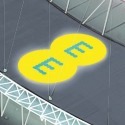Oracle to set 4G/5G policy rules for EE
Huawei's 4G PCRF at BT-owned mobile operator to make way for cloud-native and 'converged' 4G/5G policy solution from US supplier.

Andrew De La Torre, group vice president of technology at Oracle Communications, conceded to Light Reading that one reason why BT picked the US supplier to provide its converged policy rules engine was because the UK incumbent was facing an "acute geopolitical situation."
De La Torre did not reference Huawei by name, but the Chinese supplier provides BT-owned EE with a PCRF (policy and charging rules function) for its 4G network. And according to guidance from the UK's National Cyber Security Center (NCSC), "high-risk vendors" (HRVs) should not provide various mobile core functions in 4G networks, including PCRF.
The UK government has also stipulated that all 5G equipment from HRVs, which include Huawei, should be gone from the UK's mobile networks no later than 2027.
Light Reading caught up with De La Torre after Oracle announced last week that BT, a long standing customer, had selected its cloud-native converged policy management system for rollout in the EE network.
De La Torre explained, however, that Oracle's first engagement with BT on the project was a year ago. He would not be drawn on speculating about when the system will see commercial light of day in the UK, but De La Torre – perhaps unsurprisingly as an Oracle man – argued that the supplier's "truly cloud native" and "agile" converged policy rules engine was pretty much a unique market proposition.
Laying converged ground rules…
The purpose of a "converged" policy system is to ensure that customer service experience is as uniform as possible when moving in and out of 3G and 4G coverage, and of course when straying onto 5G turf.
"As is the case with most of the operators we've been working with in the policy space, BT was looking to do something that is 5G ready," said De La Torre. "But you can't do that if you continue to maintain PCRF for 3G and 4G, and then bring in a 5G PCF [policy control function] from a different vendor. The problem then is you'll have to dual configure for the same subscriber, which is not as reliable to deliver similar service characteristics. It also creates an extra overhead."
Want to know more about 5G? Check out our dedicated 5G content channel here on Light Reading.
Other future-proofing elements were contributory factors that worked in Oracle's favor during BT's selection process, claimed De La Torre. "Should BT wish to implement an edge architecture in order to deliver low latency services, or route that into an enterprise customer, our policy platform already has the rules to configure those kinds of services," he said.
And any new ideas and concepts from BT can also apparently translate into network enhancements, something which De La Torre thinks Oracle is well placed to deliver through its flexible rules engine.
…and going cloud native
Oracle took the decision to write all its 5G code from scratch and avoided the temptation – as De La Torre puts it – to reuse legacy code. "It's almost impossible to take legacy code and make it truly cloud native, but now we're positioned – and this is a big differentiator among our customers – to deliver six functional software releases every year," he said.
Every two months, then, Oracle holds out the promise of being able to drop a functional enhancement into an operator's network. This should reduce lead times for network upgrades of this sort, which, said De La Torre, are typically 8-12 months.
Oracle's "automated test suite," which BT has access to, can apparently test any network function and put BT's specific use cases through its paces as well. "We've seen 'code-to-live' in less than six days," claimed De La Torre.
Aside from BT, operators that are either using or trialing Oracle's converged system include South Korea's KT, Telenor Norway, Dish Network and two other US carriers.
Oracle is not the only one pushing on a converged PCRF/PCF. Others, as far as Light Reading can determine, include Alepo, Amdocs, Cisco, Ericsson and Nokia.
— Ken Wieland, contributing editor, Light Reading
Read more about:
EuropeAbout the Author(s)
You May Also Like


.jpg?width=300&auto=webp&quality=80&disable=upscale)









